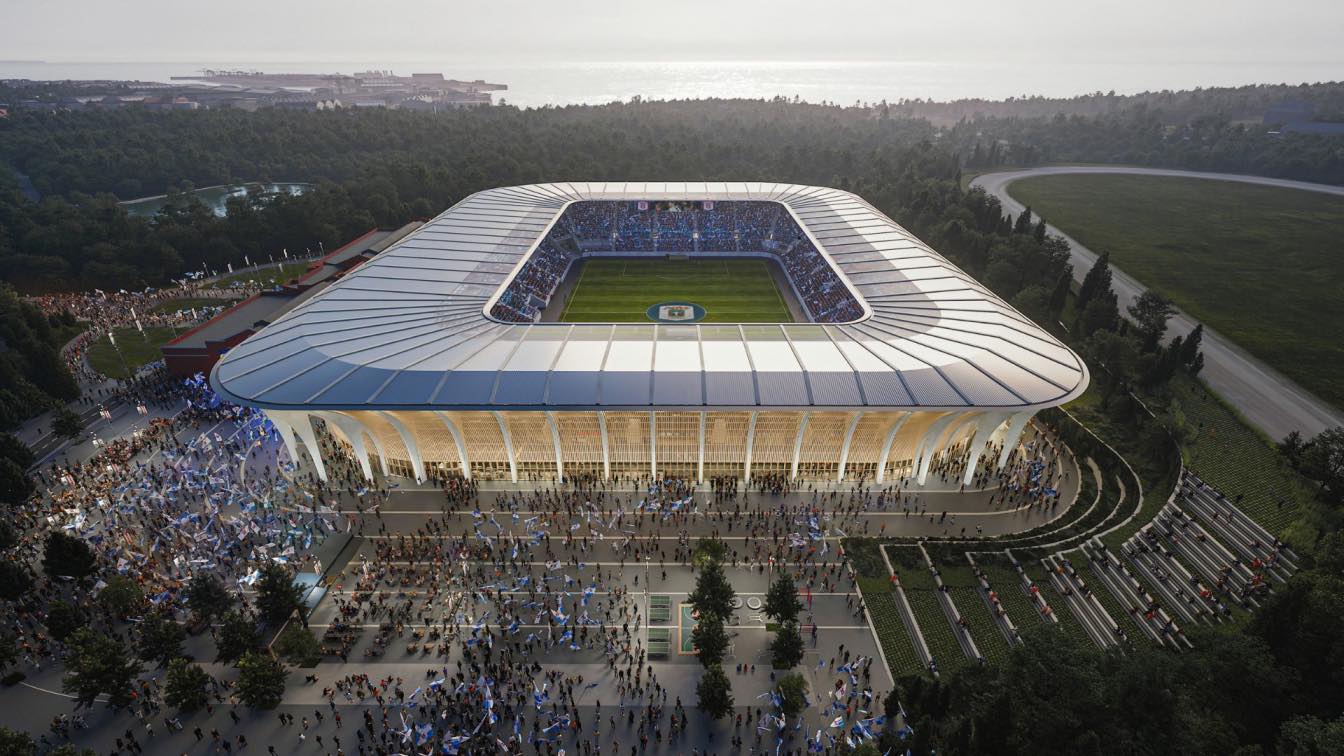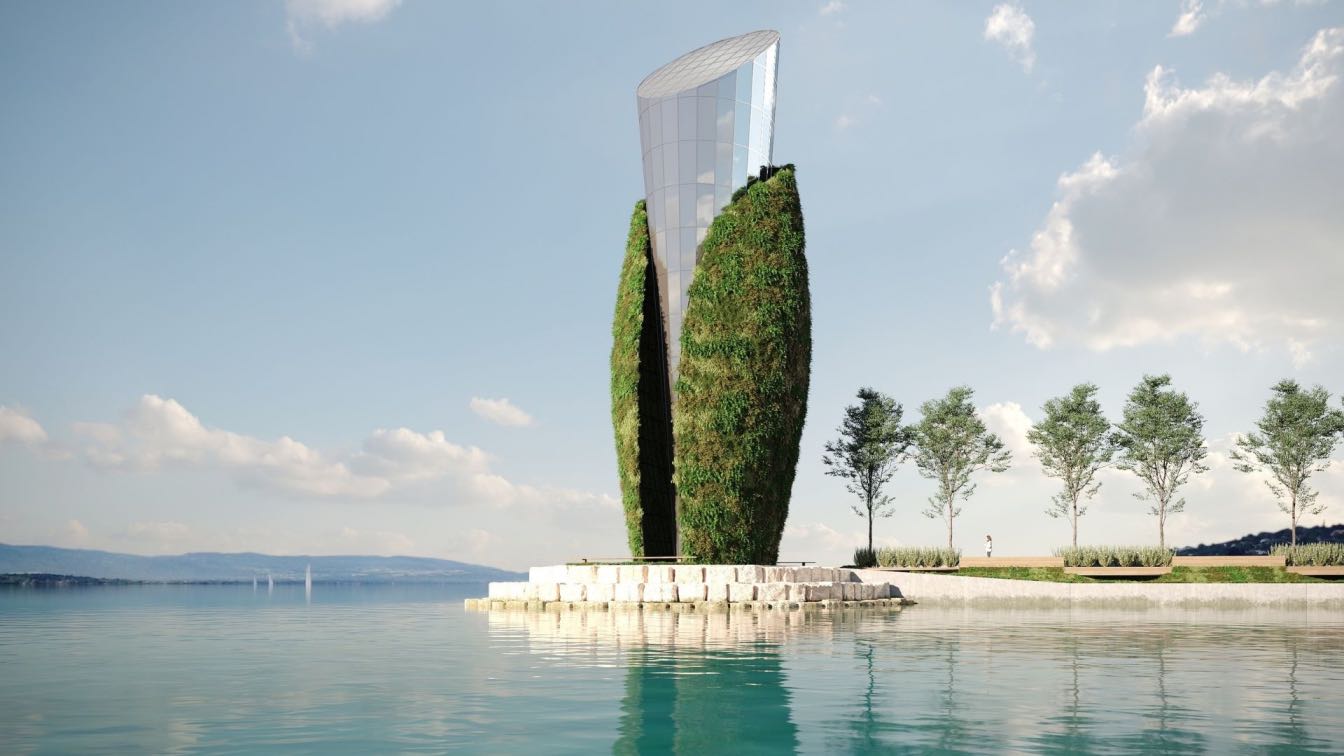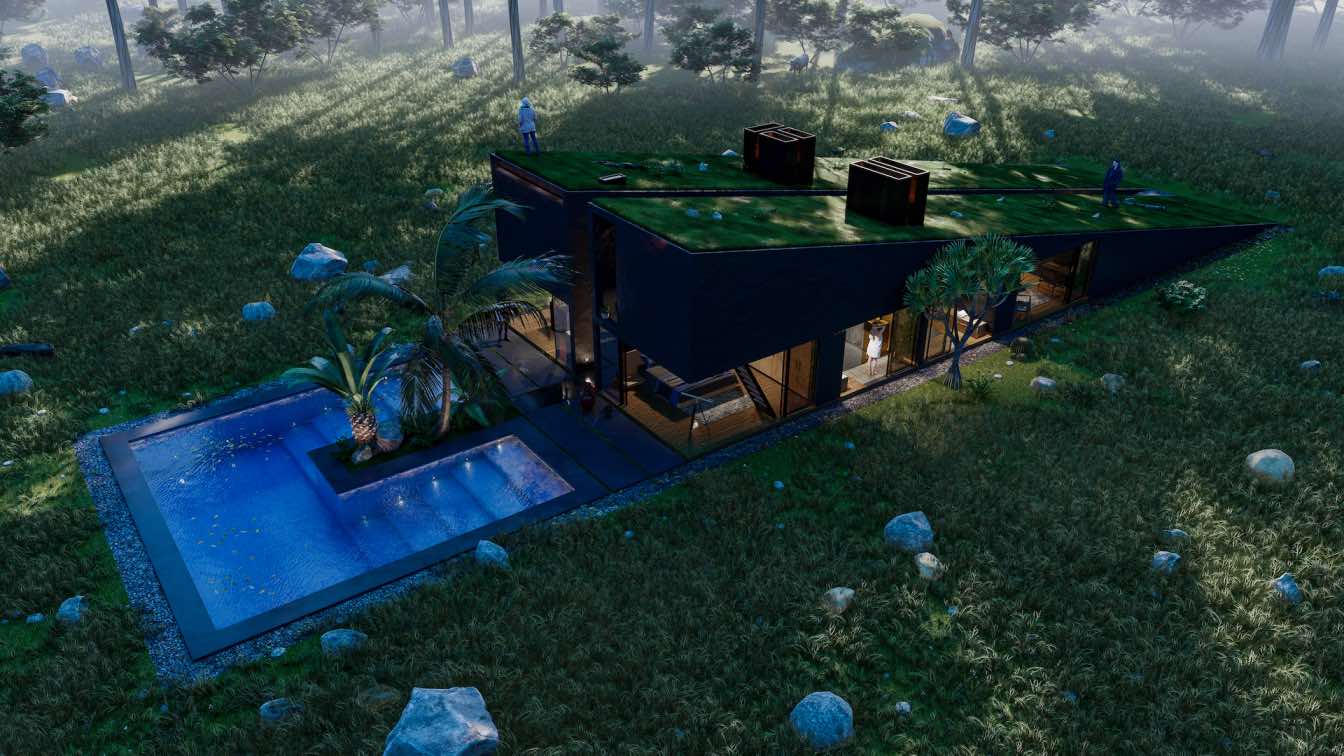The team comprising Zaha Hadid Architects working with architecture and engineering consultancy Sweco and landscape architects Tredje Natur has won the competition to build the new Aarhus football stadium in Denmark.
Bringing supporters as close as possible to the field of play in a single-tiered seating bowl creating an intense match-day experience, the new Aarhus Stadium is embedded within the city’s Marselisborg forest.
Titled the “Arena of the Forest”, the design concept is informed by the vertical rhythm of the surrounding trees that reach up to 47m in height. The design envisions the new stadium as an extension of the forest with its verticality continued in the stadium’s public colonnades and the timber ribs of its façade. These vertical gestures flow from the forest towards the landscaped plaza and into the colonnades of the stadium’s external and internal concourses. Together with an intricate hierarchy of timber ribs within the façade and roof, the stadium’s large horizontal volume is subdivided into a human scale whilst at the same time offering a sense of arrival for the fans congregating in the adjacent public plazas.

The new stadium’s roof is designed to maximise weather protection and increase comfort levels in the adjacent external plazas as well as the internal concourses, defining a sheltered 360-degree public circulation route that is independent from the events within the stadium; creating welcoming new public spaces for a wide variety of civic, recreational and cultural uses by the local community and visitors to the park.
The stadium’s transparent roof and the gaps within the timber ribs of its façade reveal glimpses of the surrounding forest, while its permeable colonnades blur the boundaries between different programmes. The east and west sides incorporate open colonnades that act not only as intuitive wayfinding to demark the main entrances, but also as an interface between public events and ticketed programmes; allowing the two to expand into one another and maximise the potential to host many different type of events 365 days a year.
To be built on the site of the existing stadium, the new project’s design, structure, and materials are optimized with regards to environmental impact, functionality and experienced value. In using the right materials for the right function, and reducing quantities to the absolute minimum where strength and robustness add the greatest possible value, the new Aarhus Stadium is characterized by three primary materials: concrete incorporating recycled aggregates for the columns; locally procured, upcycled and recycled steel for the trusses; and timber from local certified sustainable sources for the façade cladding.

The adjacent 'Stadionhallerne' building completed in 1918 by architect Axel Høgh-Hansen will be refurbished. Its intense red facades and white ornamentation will be retained to keep its historic soul that everyone at the club holds dear.
The design and construction of the new building is driven by the recycling and reuse of the existing stadium’s materials and components to the largest extent possible. In addition to the positive effect on the new stadium’s environmental impact, the reutilization of the old stadium’s components will contribute to the local anchoring of the project.
Home ground to Aarhus Gymnastikforening (AGF) football club whose first team play in the Danish Superliga, the current Aarhus Stadium opened in 1920. While a series of refurbishments were undertaken between 1948 and 2004, the existing stadium no longer meets the standards required to host regular top-flight professional and international football matches as well as large-scale cultural events. Perhaps most notably for AGF supporters, the long distances between spectators and the football pitch within the existing stadium are an obstacle to generating the most exciting atmosphere for AGF players and fans at home games. The new stadium will bring fans very close to the field of play, creating an immersive experience for everyone at the match.

The competition organizers praised the team’s proposal for its understanding and interpretation of the stadium’s special location within the ancient Marselisborg forest and its adjacency to the historic Stadionhallerne: "The strong manifestation of the winning project is inviting, reaching out to its surroundings and connecting well with the context.”
Gianluca Racana, director of Zaha Hadid Architects said: “It is an honor to have been selected to build such an important project in Aarhus. Our proposal for the new Aarhus Stadium is inspired by its natural forest context and the club’s legacy. Providing a wealth of new public spaces for use 365 days a year, the stadium will be a new landmark for the city that incorporates the highest standards of environmental, economic, and social sustainability within in every aspect of its design and construction.”
Peter Kristiansen, case architect of Sweco said: “The new Aarhus Stadium aims to become a catalyst for fans and the local community, a new identity for the club, and a new landmark on the national and international football fraternity. We are thrilled to be awarded this prestigious project. We see it as a recognition of our local presence in the city and our understanding of the uniqueness of the place, the context, and the soul and identity connected to AGF and Aarhus. With our partners we have designed a stadium that fits into the environment and with a Nordic profile. The stadium is carefully designed, and I guarantee that there will be a great experience from every seat.”

Ole Schrøder, partner in Tredje Natur said: “Our proposal is celebrating the proud spirit of the club and its importance for the City of Aarhus. Paying tribute to both the architectural heritage on site and the unique nature that surrounds it will serve as a welcoming gesture to the public. On any occasion!”
42 Danish and international architect teams applied for prequalification for the tender in December 2021, and six teams were chosen for the first round of the competition with three equal winners continuing to the second round. The winner of the competition was announced by the City of Aarhus as developer, as well as the two sponsors behind the majority of the financing, Lind Invest and Salling Fondene, and the local Superliga club AGF Football.
The winning proposal will now be qualified during the first half of 2023 in collaboration between the City of Aarhus, the winning team and AGF. Parallel to that process, the contractor who will be responsible for the construction of the new stadium will be found. In the second half of 2023, the construction will be planned in detail, before the current stadium begins to be gradually dismantled beginning in 2024. The construction phase will proceed over four stages towards the expected inauguration of a new stadium during 2026.




Project Team
Client: The Municipality of Aarhus
Project Team: Zaha Hadid Architects (Lead), SWECO Danmark (Local and Engineering), TREDJE NATUR APS (Landscape and Local)
Design: Zaha Hadid Architects (ZHA)ZHA Project Director: Gianluca Racana, Ludovico LombardiZHA Project Leads: Subharthi Guha, Jakub Klaska, Paolo ZilliZHA Competition Team: Andy Lin, Charles Harris, Dieter Matuschke, Jinhee Koh, Kyle Dunnington, Luca Melchiori, Maria Laura, Michael Forward, Matthew Gabe, Nastasja Mitrovic, Sara Criscenti, Valentina Cerrone, Yuzhi XuZHA Sustainability Team: Carlos Sousa- Martinez, Bahaa Alnassrallah, Aditya Ambare, Aleksander Mastalski
Local Architect and Engineer: SWECO, DenmarkSweco Project Director Engineering: Frands AndersenSweco Project Director Architecture: Peter KristiansenSweco Cost Manager: Jens HøjgaardSweco Architecture Team: Tim Nørlund , Tina Lind, Eiwen Ying, Søren Vestbjerg Andersen, Thomas Stub Naylor , Lene Kristensen, Bo BoiSweco Engineering Team: Bruno Bjerre, Anton Møller Christensen, Søren Pedersen, Bent Greve, Martin Hougaard, Helle Wøhlk Sørensen, Steffen Alstrup Haagensen, Kjetil Birkeland Moe, Kasper Støttrup , Lars SchäferSweco Sustainability Team: Allan Hesselholt, Mads Funder Larsen
Landscape Architect: TREDJE NATUR APSTredje Natur Project Director: Ole SchrøderTredje Natur Senior Project Manager: Mette FastTredje Natur Team Members: Sofie Askholm Ibsen, Kirstine Lorentsen, Kasper Havemann, Adrianna Trybuchowicz, Lucija Belinic, Philip McKay





